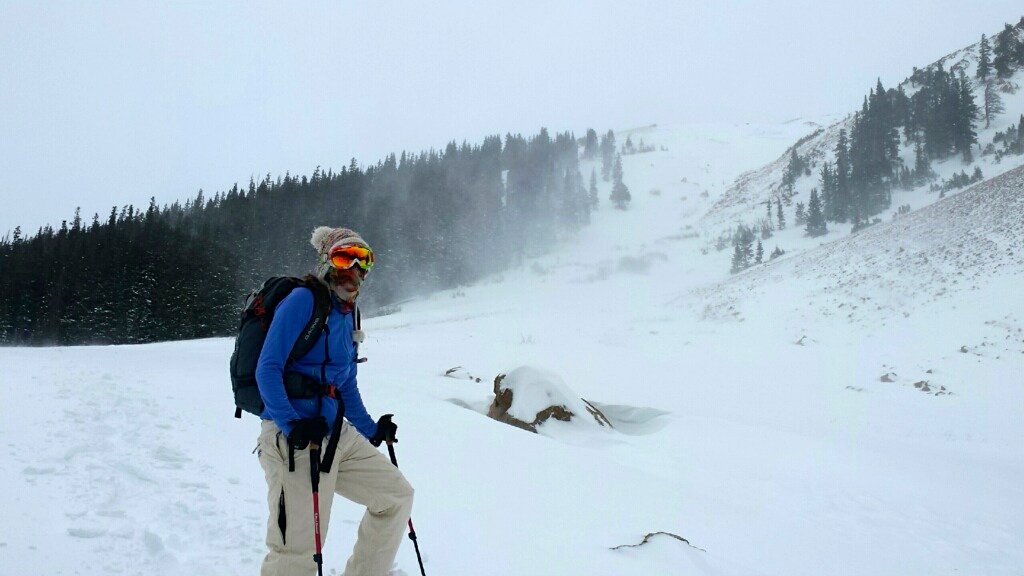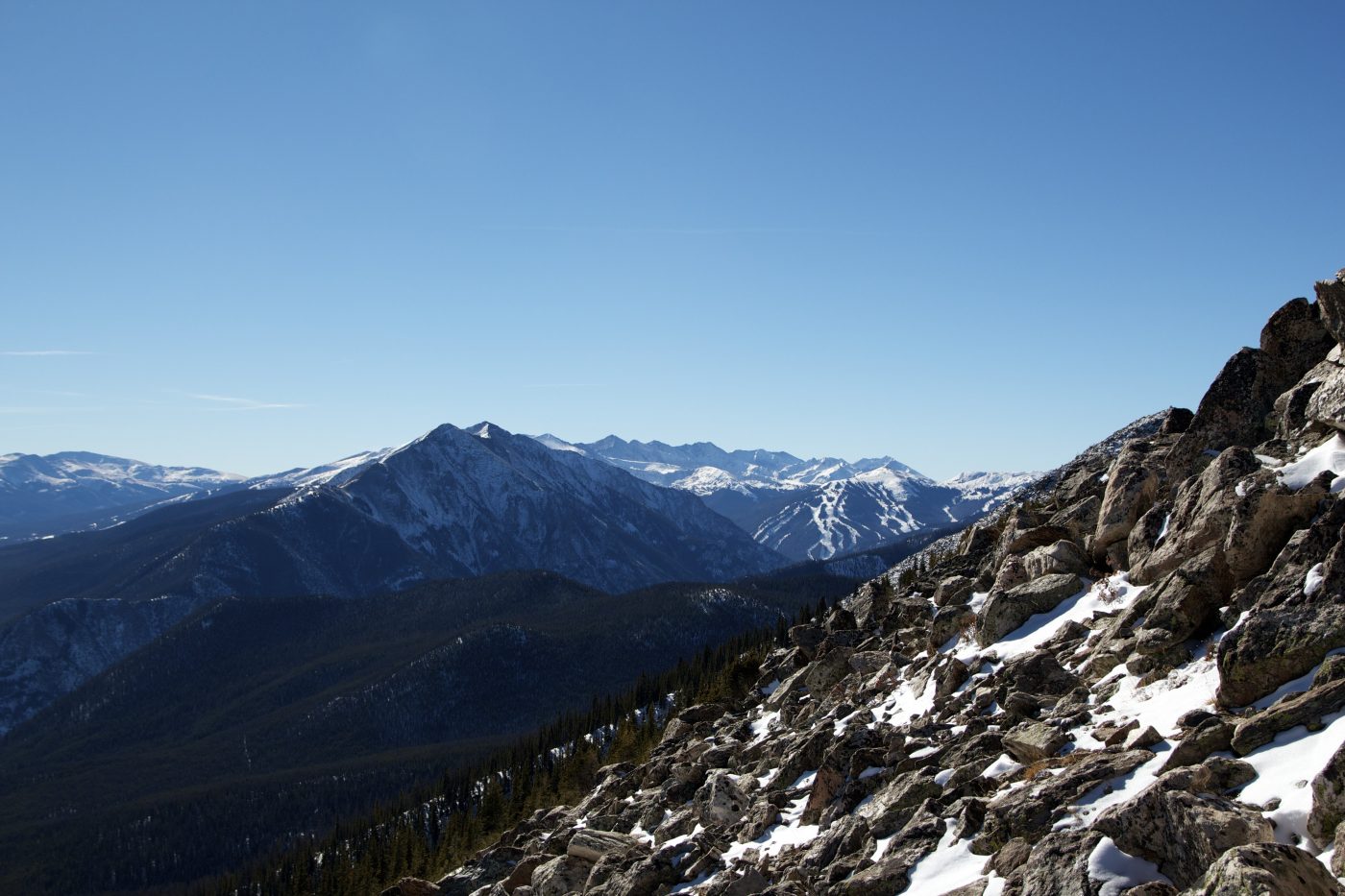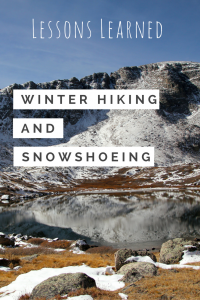Last Updated on November 5, 2021 by foxintheforest
It’s cold, well below freezing. You’re a few miles in and the weather is starting to roll in quick. 40-50mph freezing winds whip down the steep face of the mountain your hiking next to. You lose sight of your partner in front of you. Despite the seemingly brutal conditions you’re warm. The wind actually feels good. You’ve been working hard through the drifts. You stop, look at the swirling landscape around you and you’re overcome with pure joy, even though you know you can’t go on. You aren’t making it to your intended destination a mere 1.5 miles ahead. In that moment, you realize that you’ve arrived at the day’s destination. You are here. Winter hiking and snowshoeing is an incredibly rewarding experience, it reminds you of who you are. Let these snow hiking tips and gear suggestions be your guide.

Consider the Changing Conditions While Snow Hiking
Winter hiking and snowshoeing are definitely more difficult than hiking around on a perfect summer day. There’s a lot at play. For starters, the ground moves. One gust of strong wind can easily eliminate a trail, including the one behind you. There is a significant amount of sinking involved, even on snowshoes. And don’t forget about the avalanche danger (seriously, if you don’t know what you’re doing get proper training before heading into any avalanche prone area). The weather can kill if you aren’t prepared. I’m not trying to discourage anyone from getting out there and enjoying it, but I am saying that there is a little more planning, and a little more risk involved. Be sure to have a GPS in case you get lost, as well as firm understanding on how to use a map and compass.

Winter Hiking and Snowshoeing Plans
No matter where you go it’s always important to have a trip plan. Details should include where you are going, what trailhead you will park at, who will be with you, what you are bringing, and when you expect to return. For winter, it’s also important to have a note on the analysis of what you expect conditions to be like. This will help you prepare mentally for the challenges of winter travel.
Always include relevant information for a search and rescue team. Vehicle identification, jacket/coat colors, medical conditions of your party, and any survival gear you may have. Leave your plan with someone you trust. Also leave the number they should call should you not return by the designated time.

Have the Right Gear
Winter hiking requires more gear. Dress warmly and in layers of non-cotton material. You want to be able to use your clothing to regulate your body temperature. You don’t want to sweat too much and you should remove any items of clothing that will make you feel hot. In the backcountry world, there’s a saying, “Be bold, start cold.” Once you get moving, your body will warm itself up.
Ensure that you have the proper footwear and traction for your outing. In winter you may need microspikes, snowshoes, or crampons for the terrain you are on. Always plan for the worst case. Trekking poles also come in handy during the winter. They give you extra stability and can make a quick jaunt up a slippery trail much easier.
You will also want to bring a water bottle instead of a bladder. Bladders often freeze, making it difficult to drink. Food should also be modified. Nothing is worse than gnawing endlessly on a frozen energy bar. Consider bringing things that are still easy to eat when cold, such as pizza, trail mix, or a sandwich.
Be prepared for emergencies by packing a space blanket or small bivvy, a lightweight shovel in case you need to build a shelter, and a way to start a fire. Even if I’m headed for a 2-mile jaunt, I make sure to bring anything that could help me in the event of an emergency.

It’s Just fine to Turn Around
In the past month, I’ve gone on three winter backcountry excursions. Of those three I have turned around exactly three times. To be completely honest it frustrated me. However, it reminded me of the real reason why I have such a passion for the outdoors. Snow hiking and snowshoeing connect you with yourself like nothing else can. The simple act of putting one foot in front of the other over difficult terrain forces you to come face to face with yourself. Winter amplifies this with the element of cold. Conditions are harsher. It’s more dynamic. Sure, you’d love to make it to your planned destination, but that isn’t always possible – winter reminds us of that.

Letting go of the destination is an important lesson. When you let go you live in the moment, instantly everything becomes more clear. You truly become a part of the environment around you, living it. You become part of that series of moments; fleeting, ever-changing, and beautiful.
If you’re looking to get into winter activities in the backcountry, you should. And good for you, seriously. It takes some guts to put yourself into a less forgiving environment, but it’s worth it, always.

The Ultimate Lesson of the Backcountry
The backcountry has so much to teach us, no matter what time of year. So get out there. Let that 40mph freezing wind blow through your hair. Post hole up a steep grade, realize that’s a sucky way to travel, and turn around. Lose the trail and stomp around trying to find it only to end up retracing your steps and head back. It’s not failure, it’s the journey and everyone knows the journey is always worth more than the destination.

